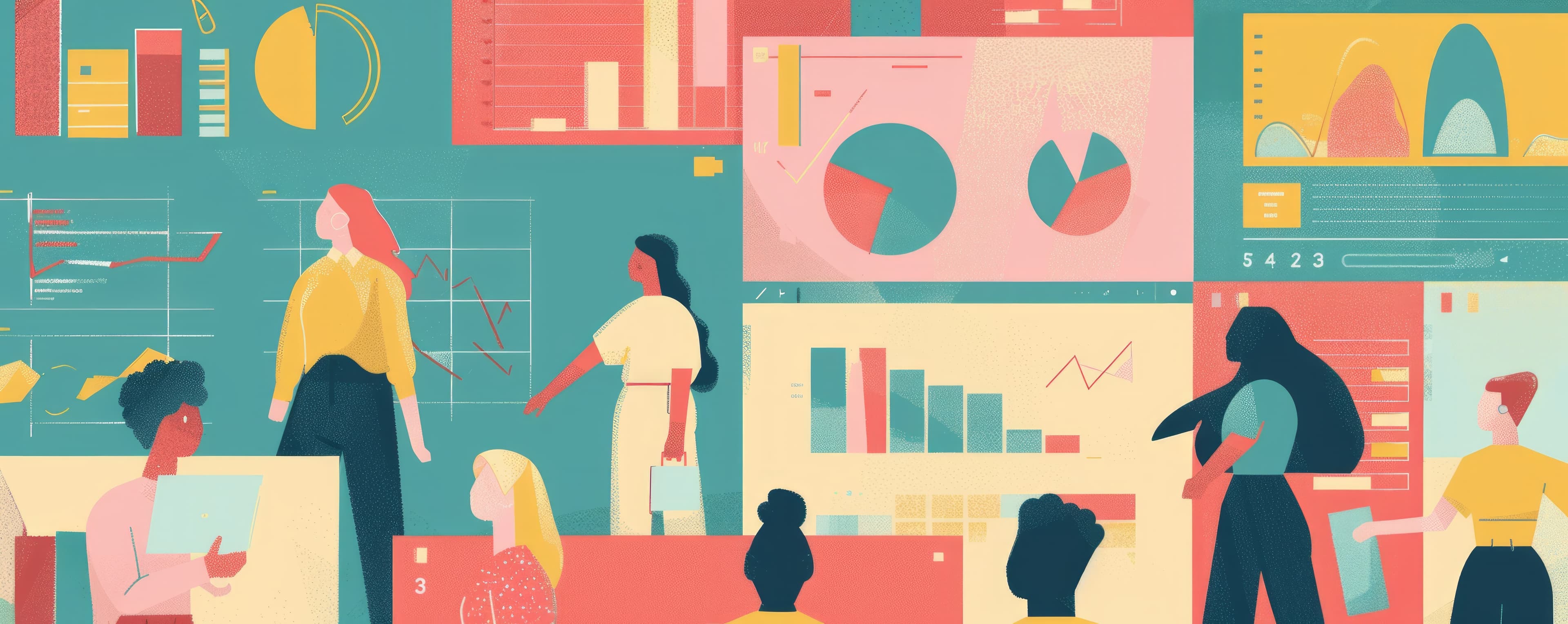Compass Staff |
The following is a recap of the Guild webinar, “From Cost to Catalyst: How to Maximize L&D Impact”, which is available on on-demand here.
Most people believe — and research backs them up — that great learning and development (L&D) drives business value. But if you’re an HR leader, how do you prove that value, really? Finance tracks ROI, Marketing measures conversion, and Operations reports on efficiency — all while CHROs and L&D leaders struggle to demonstrate how their investments in people move the top and bottom lines.
The problem is more acute than you might think. A recent Guild survey of 500 HR leaders revealed that approximately one in four leaders (28%) believe their L&D investments have “unknown, little, or no impact” on revenue or profit margin. Consider this in terms of dollars for a moment. If the total L&D market is valued at between $150 billion to $390 billion annually, that means between roughly $40 billion and $110 billion is being spent on corporate learning without a clear understanding of how those investments affect the two most important metrics to business leaders and investors.
28% of HR leaders can’t tie their learning investments to revenue or profit.
“This isn’t a great look for us,” Matthew J. Daniel, senior principal of talent strategy and mobility at Guild, says of the HR sector. “We've got to do better at articulating the value of learning.”
Guild’s research explored how to do this more effectively, finding that leaders who tie learning directly to their organization’s business strategy are 122% more likely than their peers to meet high-priority metrics. Unsurprisingly, one success factor for these leaders, we discovered, was data. Every organization has loads of data. The differentiation for these leaders was that they knew how to access it and what they should do with it once they get it. Specifically, these high-performing leaders are 40% more likely than their peers to report using tech and data analytics to guide their L&D strategies, we found. Data — and its increasing importance to HR leaders — was a key theme of a recent SHRM-sponsored webinar, “From Cost to Catalyst: How to Maximize L&D Impact,” featuring Guild’s Daniel; Laura Bartus, director of learning design at Humana; and Michaela Doelman, CHRO of Washington State Government.
In these two very different environments — a Fortune 100 health care company and a sprawling state government — Bartus and Doelman are each using data as a strategic asset. Their stories demonstrate how L&D leaders can go beyond course completions and satisfaction scores to connect learning with real business outcomes like retention, engagement, and internal mobility — and build trust with the business in the process.
Here are the highlights from the stories they shared and the advice they offered to other leaders working to become strategic business partners to their organizations.
Humana’s story
How Laura Bartus built a data strategy on cross-functional relationships, outside-in thinking, and upskilling herself
Bartus knew she needed to get her department’s data house in order. She led the development of a learning data lake on Microsoft Azure, integrating hundreds of data sources across quality, operations, and workforce analytics. This meant she was no longer dependent on another function to track the impact of her and her team’s work. While building this data lake took nearly two years of persistence, Bartus credits the importance of building relationships across functions to its success.
“We went to people and said, ‘Can we have access to that data source too?’ So, we get all of those primary sources of data, and we built a data warehouse. Basically a pool we dump all of our little rivers into,” she explained.
To enable this work, she made a bold and uncommon move in L&D: hiring a dedicated data engineer. This role, often found in product or analytics teams, became central to the function’s success. The data engineer built the architecture to bring together disparate sources into one accessible ecosystem. This enabled her team to report on performance, spot trends, and tie learning directly to operational outcomes.
“I’m not just an L&D leader — I’m a business leader who develops people.”
-Laura Bartus, director of learning design at Humana
She also hired someone skilled in data visualization to ensure that the data she gathered could be presented to executive stakeholders in dashboards and digests that were easy to understand. To this end, she customized her reporting by stakeholder level. Executives got high-level summaries tied to outcomes, while frontline managers got detailed metrics and dashboards specific to their teams.
Humana’s real-time dashboards in Power BI now cover:
Learner satisfaction (Level 1);
Knowledge gain (Level 2);
On-the-job application (Level 3); and
Business impact (Level 4)
To build credibility, Bartus personally upskilled via a data strategy certification from eCornell and an ROI certification from ATD, which gave her the language and frameworks to converse more fluently with business leaders.
“Once you understand how businesses make money, it changes your mindset,” she said. “I’m not just an L&D leader — I’m a business leader who develops people.”
Audience Q&A highlights
Q: What if my org is resistant to data sharing?
A: Bartus: “We were surprised — there was very little hesitation. Because people wanted to know if learning was helping.”
Q: How do I even begin building dashboards?
A: Doelman: “Start with relationships. Don’t just ask for data. Ask what the problem is, what they’re trying to solve — and then work together.”
Q: How can small L&D teams measure impact with limited resources?
A: Bartus: “Start small. Pick one business metric — quality, error rates, whatever — and track it over time. You don’t need a data warehouse to make a case.”
Washington state’s story
How Michaela Doelman measures impact through outcomes, not intentions
To Doelman, gaining access to business data is rarely about technology. In Washington State, a culture of transparency already exists through public performance reviews, where agencies report on progress toward policy goals in televised sessions. But even with that infrastructure, Doelman stressed that the real unlock comes from relationship-building.
“If we just look at data as it is, we’re kind of shooting in the dark,” she said. “So we come in with curiosity and a servant mindset. We’re not telling people how to do their jobs — we’re asking how learning can help them reach their goals.”
That trust-building creates the foundation for something even more powerful: using data to draw clear connections between learning and business outcomes.
Doelman emphasized the importance of going beyond attendance or satisfaction metrics to truly understand the impact of leadership development. Her team at Washington State is exploring how participation in learning programs correlates with organizational outcomes such as employee engagement, turnover, and even personnel-related complaints. Her dashboards currently include:
Time to hire;
Turnover by state agency;
Engagement survey results (with demographic filters);
Learning participation; and
Leadership satisfaction
“We’re asking: what do engagement scores look like for leaders who’ve gone through development versus those who haven’t?” she added. “We’re also debating whether we can track things like tort claims or labor grievances to see if better leadership is reducing those outcomes.” This broader view reflects a shift toward tying leadership behaviors — and learning investments — directly to the experience of employees and the performance of the organization. But for Doelman, measuring impact is only half the equation. Building a workforce ready to respond to change is the other.
Doelman is also working to shift from rigid hierarchies toward a more flexible, skills-based organizational model.
“We’re trying to make mobility not just vertical — but lateral and multidirectional,” she said. That means creating a system that helps employees identify and build skills that are relevant across roles and departments, not just for traditional promotions. The goal is to give employees permission and tools to shift careers internally, reducing the need for layoffs while adapting to changing workforce demands.
“When someone says, ‘This is what I know how to do — you can’t teach me how to use a computer,’ we want to be ready with the right support to prove otherwise,” she said.
Takeaway tips
Hold quarterly strategy sessions with business units to align learning goals with key performance indicators.
Define custom KPIs that reflect real operational priorities — not just standard L&D metrics.
Invest in data talent and infrastructure, including analysts, data engineers, and dashboarding tools.
Tie learning to internal career mobility, proving ROI through promotions, expanded responsibilities, and succession readiness.
Said Daniel, “The bar is higher than ever before, so it’s no longer enough to steward your company's culture and be an architect of engagement, CHROs, L&D leaders, and HR leaders have to be strategic business leaders.”
Final words of advice
Bartus: “Look at OKRs and figure out whether there is a component of that OKR that learning can improve. So if it’s trying to get better net promoter scores for your call center associates, try to figure out if there is an aspect of training that can improve our customer service associates’ net promoter score.”
Doelman: “Over-emphasizing the value that learning and delivery provides actually can have the opposite effect where you can ruin your credibility. So my advice is to really go in and listen to the business needs and ask, ‘what are the problems that you’re trying to solve? And how can learning help?’”



